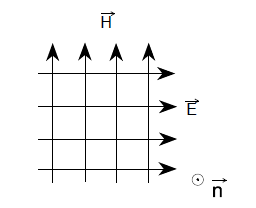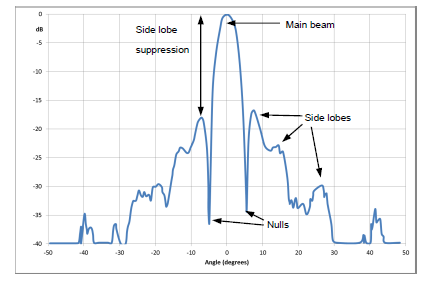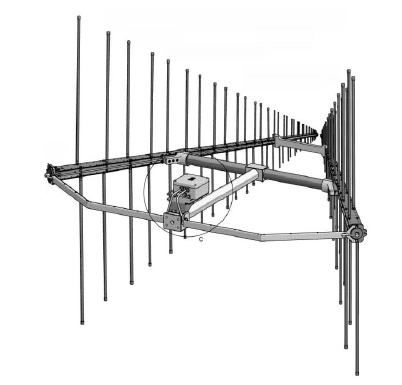Input Impedance
One of the most significant parameters of an antenna is its input impedance:
𝑍𝑖𝑛 = 𝑅𝑖𝑛 +𝑗𝑋𝑖𝑛
This is the impedance present at the antenna feed point. Its real part Rin can be split up
into the radiation resistance RR and the loss resistance RL
𝑅𝑖𝑛 = 𝑅𝑅 + 𝑅𝐿
It should be noted however that the radiation resistance, being the quotient of the
radiated power and the square of the RMS value of the antenna current, is spatially
dependent. This applies also to the antenna current itself. Consequently, when
specifying the radiation resistance, its location on the antenna needs to be indicated.
Quite commonly the antenna feed point is specified, and equally often the current
maximum. The two points coincide for some, but by no means for all types of antenna.
The imaginary part Xin of the input impedance disappears if the antenna is operated at
resonance. Electrically very short linear antennas have capacitive impedance values
(Xin < 0), whereas electrically too long linear antennas can be recognized by their
inductive imaginary part (Xin > 0).
Nominal Impedance
The nominal impedance Zn is a mere reference quantity. It is commonly specified as
the characteristic impedance of the antenna cable, to which the antenna impedance
must be matched (as a rule Zn = 50 Ω).
Impedance Matching and VSWR
If the impedance of an antenna is not equal to the impedance of the cable and/or the
impedance of the transmitter, a certain discontinuity occurs.
The effect of this discontinuity is best described for the transmit case, where a part of
the power is reflected and consequently does not reach the antenna (see Figure below.)
However the same will happen with the received power from the antenna that does not
fully reach the receiver due to mismatch caused by the same discontinuity.
 |
Forward and reflected power due to mismatch
The amount of reflected power can be calculated based on the equivalent circuit
diagram of a transmit antenna (see Figure below).
For optimum performance, the impedance of the transmitter (ZS) must be matched to
the antenna input impedance Zin. According to the maximum power transfer theorem,
maximum power can be transferred only if the impedance of the transmitter is a
complex conjugate of the impedance of the antenna and vice versa. Thus the following
condition for matching applies:
𝑍𝑖𝑛 = 𝑍𝑆
∗
𝑤ℎ𝑒𝑟𝑒 𝑍𝑖𝑛 = 𝑅𝑖𝑛 + 𝑗𝑋𝑖𝑛 𝑎𝑛𝑑 𝑍𝑆 = 𝑅𝑆 + 𝑗𝑋𝑆
If the condition for matching is not satisfied, then some power may be reflected back
and this leads to the creation of standing waves, which are characterized by a
parameter called Voltage Standing Wave Ratio (VSWR).
The VSWR is defined (as implicated by its name) as the ratio of the maximum and
minimum voltages on a transmission line. However it is also possible to calculate
VSWR from currents or power levels as the following formula shows:
Another parameter closely related to the VSWR is the reflection coefficient r. It is
defined as the ratio of the amplitude of the reflected wave Vrefl to the amplitude of the
incident wave Vforw :
It is furthermore related to the VSWR by the following formula:
The return loss ar derives from the reflection coefficient as a logarithmic measure:
So there are in fact several physical parameters for describing the quality of
impedance matching; these can simply be converted from one to the other as required.
For easy conversion please refer to the table below:
Baluns and Impedance MatchingAn Antenna is normally connected to a transmission line and good matching between them is very important. A coaxial cable is often employed to connect an antenna mainly due to its good performance and low cost. A half-wavelength dipole antenna with impedance of about 73 ohms is widely used in practice. From the impedance -matching point, this dipole can match well with a 50 or 75 ohm standard coaxial cable . Now the question is : can we connect a coaxial cable directly to a dipole ? As illustrated n figure below . when a dipole is directly connected to a coaxial cable, there is a proble: A part of the current comming from the outer conductor of the cable may go to the outside of the outer conductor at the end and return to the source rather than flow to the dipole .
 | A Dipole Antenna directly connected to coaxial cable
|
This undesirable current will make the cable become part of the antenna and radiate or receive unwated signal, which could be a very serious problem in some cases. In order to resolve this problem, a balun is required. The term balun is an abbreviation of the two words balance and unbalance. It is a device that connects a balanced antenna ( a dipole , in this case) to an unbalanced transmission line (a coaxial cable, where the inner conductor is not balanced with the outer conductor). The aim is to eliminate the undesirable current comming back on the outside of the cable. There are a few baluns developed for this important application. Figure below shows two examples .
 | Two example of baluns
|
The sleeve balun is a very compact configuration: a metal tube of 1/4 Lambda is added to cable to form another transmission line (a coax again) with the outer conductor cable , and a short circuit is made at the base which produces an infinite impedance at the open top. The Leaky current is reflected back with a phase shift of 180 degrees, which results in the cancellation of the unwanted current on the outside of the cable. This balun is a narrowband device. If the short-circuit end is made as a sliding bar, it can be adjusted for a wide frequency range (but it is still a narrowband device).
The second example is a ferrite-bead choke placed on the outside of the coaxial cable. It is widely used in EMC Industry and its function is to produce a high impedance, more precisely high inductance due to the large bandwidth may be obtained ( an octave or more). But this device is normally just suitable for frequencies below 1 GHz. which is determined by the ferrite properties it can be lossy, which can reduce the measured antenna efficiency.
Reference:https://scdn.rohde-schwarz.com/ur/pws/dl_downloads/premiumdownloads
|




















,%20H-plane%20(blue).PNG)







